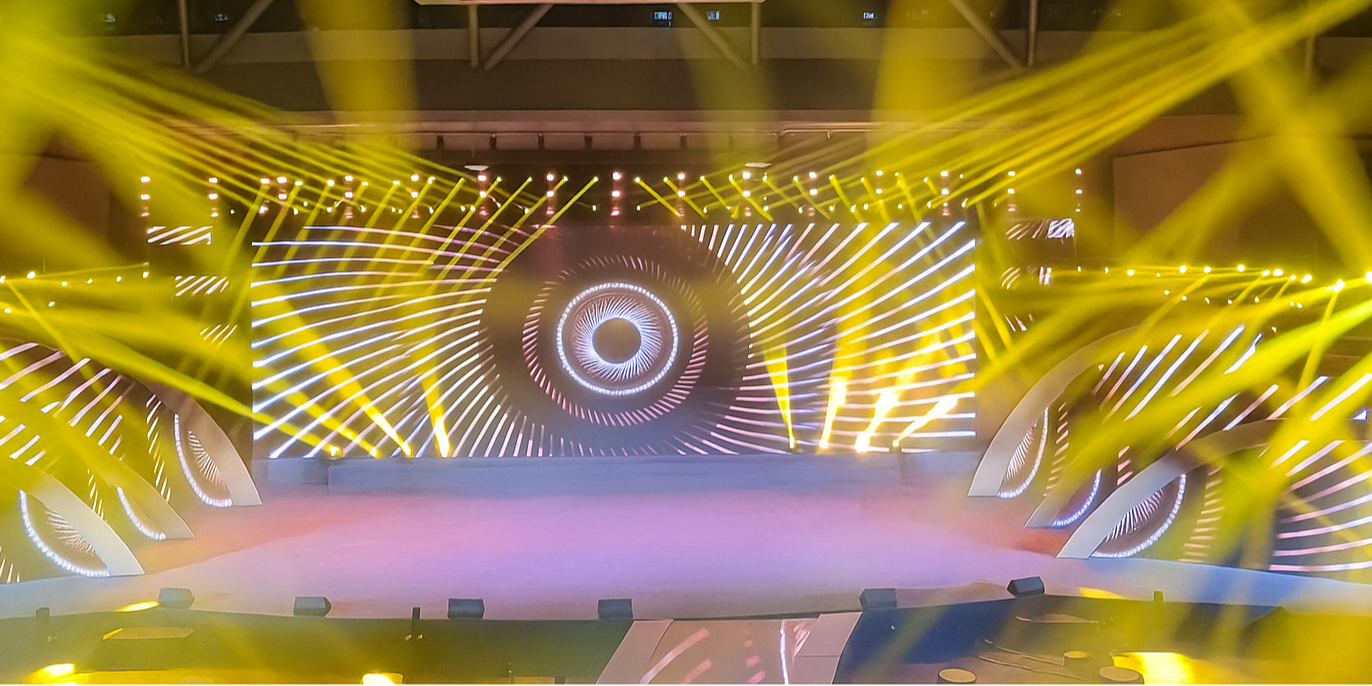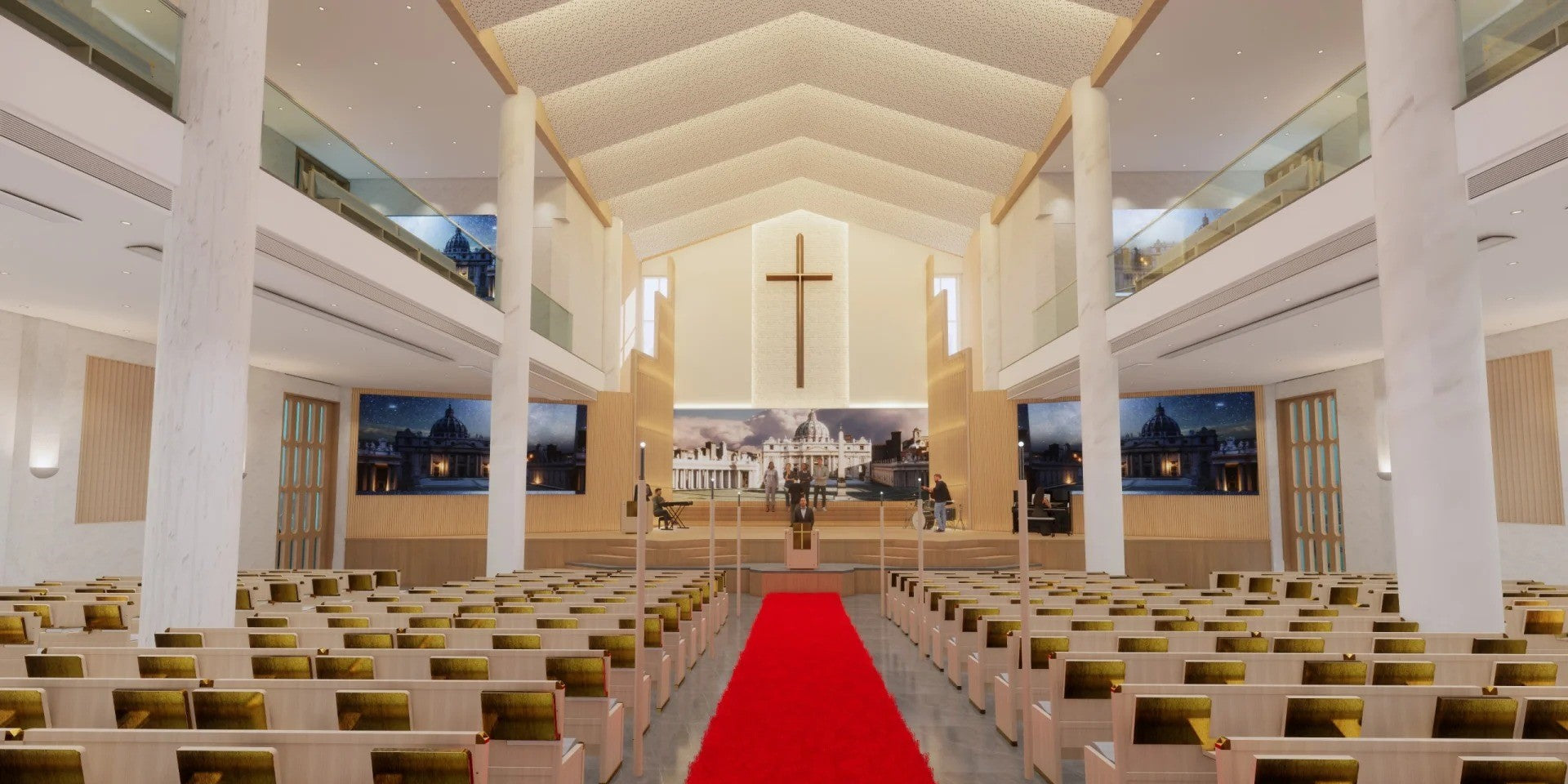限られた予算で、品質を犠牲にすることなく小さなステージを照らす方法をご紹介します。このガイドでは、DJ、バンド、小規模な会場に最適なLED照明器具、セットアップのヒント、初心者向けのオプションなどを紹介しています。
現実的な予算を設定し、必需品だけに絞る
買い物を始める前に、予算を決め、本当に必要なものを正直に考えましょう。小規模なステージ、バー、教会、あるいはモバイルDJのセットアップなど、800ドルから2,000ドル程度の予算があれば、賢く使えば大きな効果が得られます。
ライトを買いすぎるのではなく、しっかりとしたコアとなるセットアップを構築することに重点を置いてください。
- 2~4から始める LED PARライト 一般的なカラーウォッシュ用
- 1~2個のエフェクトライトを追加 ミニムービングヘッド または ストロボ エネルギーと動きのために
- 取り付け金具、DMXケーブル、電源タップも忘れずに
始めたばかりなら、量よりも柔軟性を優先しましょう。機材を乱雑にする低品質の機材を山ほど揃えるよりも、多機能で優れたライトを少数揃える方が効果的です。

より多くの機能を備えたLED照明器具を選択する
限られたスペースと限られた予算で作業する場合、最小限の投資で最大限の出力を発揮する多機能照明器具を優先することが重要です。LED照明技術はまさにそれを実現します。コンパクトなフォームファクター、高効率、長寿命、そして幅広い内蔵機能です。小規模なステージでは、明るさだけでなく、ビーム制御、応答速度、そして柔軟なシステム構築も重要です。
最も効果的な LED 照明器具タイプを使用して照明基盤を構築する方法は次のとおりです。
一般的なカラーウォッシュやアンビエントフィルに最適なLED PARは、広いビーム角と均一な照射範囲を提供します。小規模なステージでは、視認性を高めるフロントウォッシュ、温かみのあるサイドウォッシュ、シルエットのコントラストを高めるバックウォッシュなど、ゾーン分けに役立ちます。ちらつきのない出力と32ビット調光カーブを備えた4in1または6in1 RGBW(A+UV)モデルもご用意しています。
モデル例:
これらの照明器具は、コンパクトなサイズとプログラミング可能な汎用性を兼ね備えています。パン/チルト、回転ゴボ、カラーホイール、プリズム効果により、限られた空間でダイナミックな演出に最適です。プログラミングと配置次第で、1台の照明器具でスポット、ビーム、空中演出など、様々な用途に対応できます。よりスムーズな制御には、540°パン、270°チルト、DMXプロファイル深度を備えたモデルをお選びください。
モデル例:
クラブ、ライブDJセット、コンサートのキューなど、ビート重視の環境では、ピクセルマッピングされたLEDバーや高速ストロボが視覚的なリズムを演出します。ピクセルバーはゾーン制御が可能で、ステージ全体に流れるようなエフェクト、カラーチェイス、方向性のあるスイープ効果を実現します。高周波ストロボはパーカッシブなインパクトを与えます。60Hz以上のリフレッシュレートと複数のチャンネルモードに対応したモデルは、きめ細やかなエフェクト調整が可能です。
モデル例:
可能な限り、複数の制御モードをサポートする照明器具を選びましょう。DMXによる正確なプログラミング、サウンドによるハンズフリーの反応型ショー、そしてオートランによる素早いセットアップなど、様々なモードに対応しています。これにより、プラグアンドプレイから事前プログラムされたショーまで、機器の拡張性に合わせて機器を拡張でき、後から機材全体を交換する必要がなくなります。
DMX コントローラーがありませんか? 問題ありません。
多くの小規模な会場、特にDJ、教会のチーム、あるいは初心者ユーザーにとって、フル機能のDMXコントローラーへの投資は、最初は負担が大きく、あるいは不必要に感じられるかもしれません。幸いなことに、最近のLEDステージライトのほとんどには、プログラミングの知識がなくてもダイナミックなエフェクトを実現できる操作モードが組み込まれています。
シンプルでありながら効果的なリグを構築するときに注目すべき、信頼性の高いスタンドアロン モードが 2 つあります。
- サウンド起動モード
このモードでは、内蔵マイクを介して照明器具がリアルタイムでオーディオに反応します。ビート、ボリューム、リズムの変化に応じて、色の変化、ストロボバースト、ムーブメントキューなどの照明エフェクトが自動的に作動するため、DJ、ライブミュージック、またはオーディオ再生と同期したあらゆるセットアップに最適です。
次のような備品
- 自動モード(自動実行)
自動モードでは、事前にプログラムされたシーンとエフェクトが自動的に切り替わるため、一定の照明の流れが必要な結婚式、ラウンジ、背景のビジュアルに最適です。
次のようなモデルは、LPC1818(RGBWA+UV PAR)、 LF4808(マトリックスストロボ)、 そして LM0740(ウォッシュ+ズームムービングヘッド) ゆっくりとしたフェードからパルスパターンまで、豊富な自動プログラムを提供します。 LM0740特に、鮮やかな色の混合と電動ズームを組み合わせることで、コントローラーなしでワイドステージウォッシュ効果やタイトビーム効果が得られます。
これらのモードは完全なDMXプログラミングほどの精度は提供できないかもしれませんが、適切な照明器具と組み合わせることで素晴らしい結果をもたらすことができます。そして、ほとんどの
予算だけでなく、環境に合った照明を選びましょう
予算がどれだけ限られていても、照明設備は会場の物理的および視覚的な要件を満たす必要があります。3メートルのリハーサルスペースで美しく機能する照明器具が、天井が高く周囲光のある幅6メートルのイベントステージでは全く期待通りの性能を発揮しない可能性があります。
照明を選ぶときは、「予算はいくら?」と尋ねるのではなく、次の質問をしてください。
- 光から被写体までに必要な投影距離はどれくらいですか?
- 天井の高さや取り付けオプションにはどのようなものがありますか?
- 競合する自然光や間接照明はありますか?
- 観客は環境を観察したり、踊ったり、あるいは環境と交流したりすることを想定していますか?
照明器具の選択は、価格だけでなく、ビーム角度、出力強度、照射範囲といった現実的な制約を考慮する必要があります。適切な場所で安価な照明器具を使用すれば、不適切な場所で高価な照明器具を使用した場合よりも優れた性能を発揮します。
セットアップが簡単で、実用に耐える、お手頃価格の照明キットをお探しですか?初心者向けのオプションをご覧ください。 https://betopperdj.com少ないリソースでより多くの成果を求めるクリエイター向けに設計されています。




コメントを残してください
全てのコメントは、掲載前にモデレートされます
このサイトはhCaptchaによって保護されており、hCaptchaプライバシーポリシーおよび利用規約が適用されます。